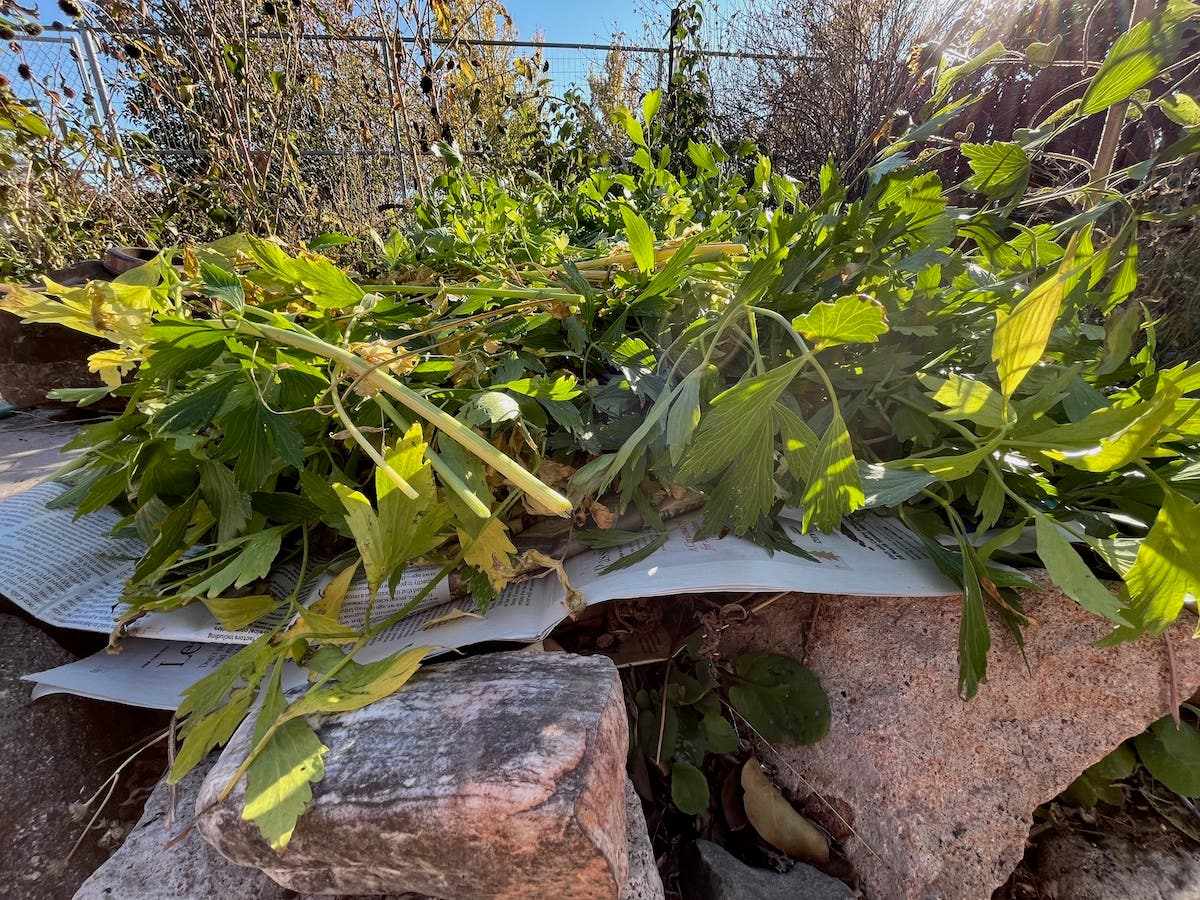Tool Shed: High Stakes
Though I try to minimize the total amount of staking necessary in my garden, there always remain those plants that demand to be staked.
Though I try to minimize the total amount of staking necessary in my garden, there always remain those plants that demand to be staked: the brittle, the flowering behemoths, the scramblers and ramblers and those particularly precious specimens that need to be elevated for ease of inspection. Staking apparatus seem reducible to two general types: first, what I call cages, and second, solitary sticks.
Cages
By cage I mean simply an elevated grid or mesh through which plant stems grow and are accordingly supported. These must be in place before the plants’ stems reach the height of the cage, as the stems are generally impossible to fish through intact after the fact. Cage height must also be proportionate to the plants’ ultimate height; I aim for half.
Cages seem best suited to those plants that carry dense foliage entirely up their flowering stems, such as Aster ‘Caliope’, because these plants seem not only to produce more flowering stems, but those produced are heavier by virtue of the foliage. Cages are also quite useful with those plants which, unsupported, would be six inches tall and six feet wide. Cages sculpt ramblers like Geranium ‘Ann Folkard’ and the nonclimbing Clematis ‘Roguchi’ into billowing three-foot mounds.
Cages are available in innumerable iterations. Metal erector-esque sets, powder coated or plasticized into unobtrusive shades of green are the most popular, presumably by virtue of their facility. Strangely, I find these more difficult, as they store awkwardly. Invariably a necessary leg or link gets inadvertently composted in autumn’s cleanup, requiring improvised and rarely sturdy prostheses in spring. Of course there are as many variations as manufacturers, and all are proprietarily, unhelpfully, different—the design is rarely interchangeable with other brands. Those who employ such sets would do well to invest in more than they believe they require, and all from one manufacturer. I’ve also found that the legs are usually of a gauge ill suited to my area’s stony soil. Generally each leg will find a stone, bend, then shift from perpendicular, listing the supported hoop into acute angles, further amplifying the border’s hospital-ward theme.
I generally prefer to recycle materials from the garden. Pliant shoots cut from annually thinned shrubs are ideal. So are new shoots from larger bamboo species. I bend lengths into hemispheres, and, having sharpened each end into a point, simply insert each deeply enough to anchor the shape long enough for the branch to dry in place, which permanently holds the shape. I repeat with other lengths to form a rectangle, then I add cross pieces, alternately threading them over and under. While rounded tops aren’t necessary, and one may feel free to create cone, obelisk or mobius, I prefer to keep retina-endangering ends safely beneath ground level.
Two caveats: If used to excess, the garden looks like Buckminster Fuller’s drafting table. When using shoots of easy-to-root plants, such as willow or dogwood, let them dry somewhat before inserting them into the soil, to discourage them from rooting.
Single stakes
Plants with relatively few flowering stems, especially the vertiginously tall, like Crambe cordifolia or Cephalaria gigantea, benefit from each stem’s ministrations attended to by an individual stake.
There’s a temptation to lasso all stems to one stake by cinching them at the waist, simultaneously bustling below and pleating above. This is to be avoided for obvious sartorial reasons, not to mention the elevated potential for garroting the very stems one aims to protect. Best to tie each in separately, keeping the knot (the greatest pressure point) on the stake side of the coupling, so as to reduce chance of damaging the stem. It’s also best to erect the stake early and tie the stem at intervals as it grows, checking prior knots and losing or loosening them as necessary. Retrofit jobs are seldom satisfactory.
There are all manner of prefabricated metal poles and crosiers, but I prefer to make my own, with dried bamboo canes, the sturdy sort often sold as Tonkin cane. Generally I get the longest length possible, as they (unlike metal) can easily be cut shorter to fit the stem at hand. Using the blade of my pruners, I also cleave them in half lengthwise, or occasionally quarters if the diameter is large. I set the cane so the round edge presses against the stem. The knot presses against the flat side, which further relieves pressure on the stem.







